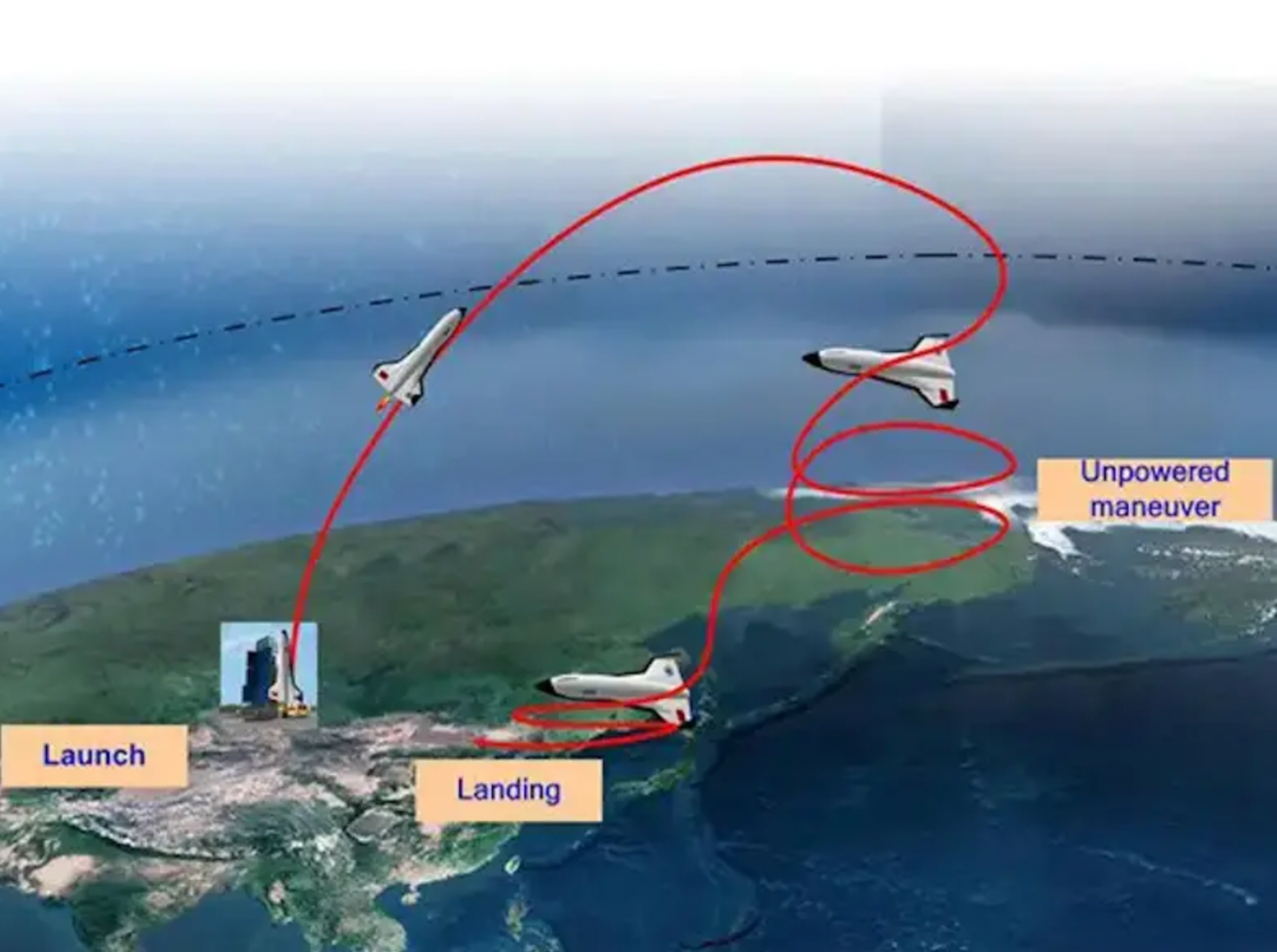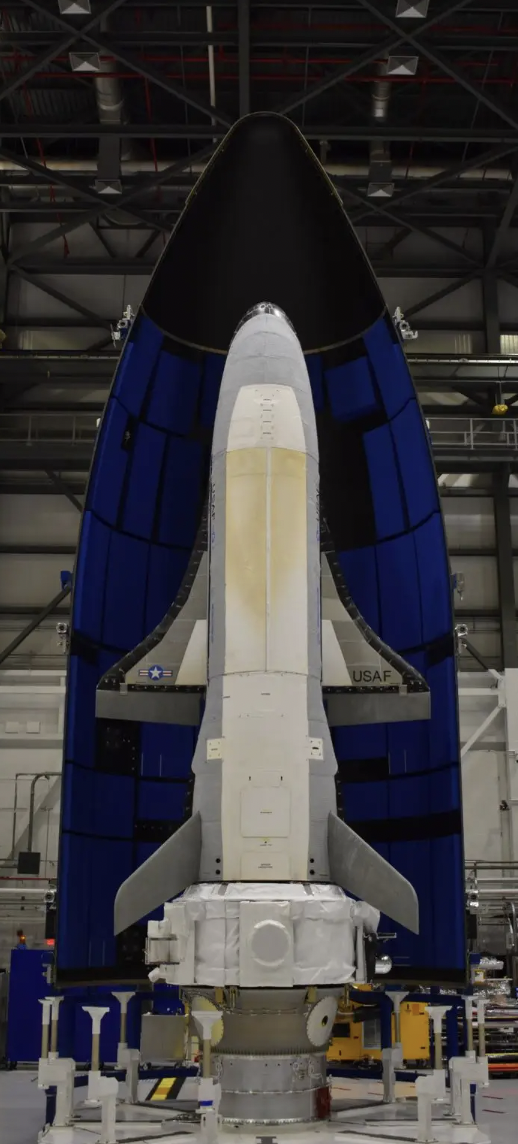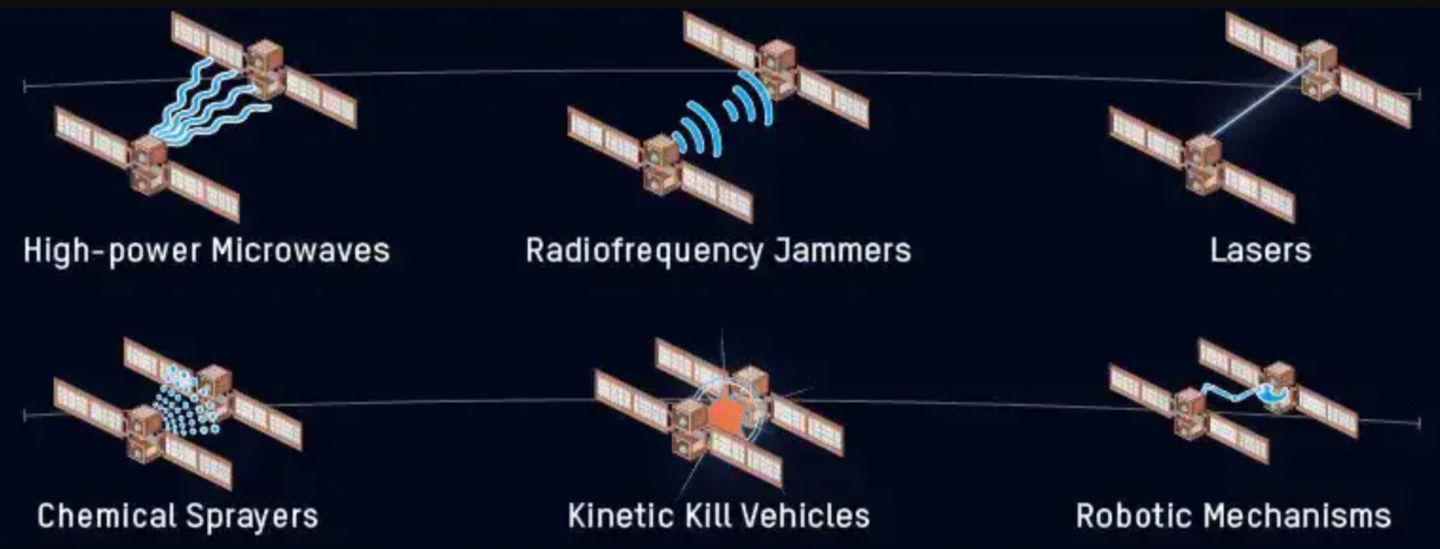One amateur astronomer, Scott Tilley, told Space.com’s Brett Tingley that some of the objects — which have been named A, B, C, D, E, and F — seem to be transmitting signals. Tilley has described these objects as “mysterious wingmen,” a nod to the “loyal wingman” terminology used for the drones that operate collaboratively with piloted aircraft. The Shenlong, of course, is uncrewed.
Tilley also provided Space.com with details on the differences in transmissions between the objects, with Object A said to be sending small amounts of data, while Objects D and E seem to be only emitting “placeholder” signals, without accompanying data.
“It should be noted that unlike emissions early in the Chinese spaceplane missions 1 and 2, these emissions are very intermittent and do not stay on long,” Tilley told Space.com. “It’s taken days of observations tracking pass after pass with dish antennas to come up with this data.”
- Extensive signal analysis by various satellite trackers indicates that the transmissions come either from the objects or from something else very close to them: There is no obvious sign of any other object that might have been responsible for them.
- The transmissions also correlate with the expected paths of the different objects and also conform to the kinds of signals previously emitted by Chinese spaceplane missions, with the same unique frequency.
- As Tilley explained, the fact that the objects are on different orbits, ranging from almost circular to broadly elliptical, means they will move closer to one another, with the potential for transmissions or other interactions between them.
- That the Chinese spaceplane can deploy payloads into space is no secret, with previous missions having involved the release of at least one small object each. At the time of the Shenlong’s second mission, in late 2022,
- SpaceNews speculated that those objects could be small satellites for monitoring the spaceplane, or some kind of test payload, perhaps to gain more experience in launching items from the spaceplane.
- It's very possible that the craft has reached a point of maturity where more ambitious experiments are being fielded by it.
- For instance, satellites capable of on-orbit manipulation and disrupting, degrading, destroying, and surveilling other satellites is a major area of development as space increasingly becomes a contested environment.
While details about the design of the spacecraft itself, and its particular technologies, are almost entirely absent, it’s notable that putting small payloads into orbit now seems to be a significant part of its repertoire.
Publicly, at least, China has claimed that its spaceplane is for commercial use. However, it has very obvious military applications, especially as a convenient and potentially efficient way to get into orbit and stay there for extended periods.
- Payload delivery is also an important part of the X-37B’s role, too, with the U.S. spaceplane now being equipped with a service module, an additional payload package that increases the number of missions that the vehicle can undertake. Details of most of what the service module contains remain classified.
- Such a capability would allow China to keep an intelligence-gathering satellite, for example, in orbit for a long period before recovering it and bringing it back to Earth for further analysis and potential reuse.
- The fact that spaceplanes are capable of dynamically maneuvering in orbit makes them especially suitable for these kinds of experiments — or even for interfering with space objects belonging to other nations.
- Back in 2021, the U.S. Space Force confirmed that China (as well as Russia) was already launching “reversible attacks,” such as electronic warfare jamming, temporarily blinding optics with lasers, and cyber-attacks, on U.S. satellites “every single day.”
- As we discussed earlier, a spaceplane would be an especially suitable candidate to expand these types of missions and there is the possibility that the objects released by the Shenlong could even be related to exploring these capabilities.
- The Shenlong or a similar vehicle, could also be a valuable intelligence-gathering asset, while a larger development of the same concept could potentially even be used to transport cargo or personnel over huge distances at remarkable speeds.
- This is a concept that has been explored by the U.S. military, too.
- While the X-37B was set to launch aboard a SpaceX Falcon Heavy rocket on December 7 at Kennedy Space Station, Florida, the mission has been repeatedly delayed, most recently being scrubbed on December 13.
- It’s now planned for launch no earlier than December 28.
- It will be the first launch using such a powerful rocket and it should see the vehicle inserted in a far higher orbit than before.
Another Launch for China’s Reusable Space Plane
In some ways, China’s Shenlong is similar to the U.S. X-37B reusable space plane, whose planned operations and capabilities have similarly remained unclear.
Interestingly, the timeline for such space plane launches is getting shorter, a sign of the maturity of the reusable technology and Beijing’s confidence in its growing space prowess. China’s first space plane made its debut mission in September 2020, and a second mission followed in August 2022, with a gap of one year and 11 months between the two missions. That the third mission came slightly more than seven months after the last made its return to Earth, after a 276-day mission, reflects the advances that the China Aerospace Science and Technology Corporation (CASC), the agency that developed the space plane, has achieved with regard to “reusability of the spacecraft.”
China is yet to release any information on the spacecraft or the mission itself, but given that it was launched from a Long March 2F rocket, which has a payload capacity of around eight metric tons to Low Earth Orbit, it may be similar to the U.S. Air Force’s X-37B space plane in terms of both its size and payload capacity.
However, what is more interesting is that the reusable space plane, Shenlong or “Divine Dragon,” reportedly released six unidentified objects in Earth’s orbit. The objects are being observed by both the U.S. Space Force and amateur astronomers alike. The objects, designated as OBJECT A, B, C, D, E, and F by the U.S. Department of Defense, are still emitting signals. The U.S. official NORAD TLE designations for these objects are 585573 through 585577 and 585581. . .









No comments:
Post a Comment